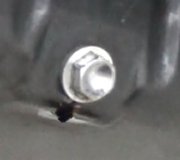On later models utilizing the OBD2 diagnostics systems). Now at this point it seems that the ECM powers up the fuel pump relay and then oil pressure opens the OP switch and both power sources run at the same time powering up circuit 120 through the fuel pump fuse to the fuel pump. That is where the mistake is made. Now look at the ECM pin# B12. Notice it is labeled Oil Pressure Input and not fuel pump Input. That is where the ECM monitors adequate oil pressure. Now notice the wire attached to that pin is a gray wire of circuit 120 (the very same circuit that powers the fuel pump). Now if you trace that wire it leads to splice#127 where it monitors the voltage supplied to the fuel pump. Now use some common sense. How can oil pressure be monitored on a wire that is powered up by the fuel pump relay and the OP switch at the same time? It can't. This is how it works. The ECM powers up the fuel pump relay providing power to the fuel pump to start the engine. Then when oil pressure comes up and the OP switch closes the additional 12V power source causes a spike in the current flowing to the fuel pump that is monitored at pin# B12 of the ECM. The ECM then cuts off fuel pump relay request at pin# F6 and disables the fuel pump relay. At that point all power flows through the OP switch to fuel pump allowing pin# B12 to monitor oil pressure and not fuel pump relay voltage. So, you should be able to see now that if the OP switch failed the engine would shut off from the fuel pump being shut off. Also, if the engine was to suddenly stop (as in a crash) the fuel pump is immediately killed very similarly to Ford's fuel inertia switch system. It is a safety issue to prevent fire after a collision.
SPONSORED LINKS
Was this helpful?
Yes
No
Sunday, March 27th, 2022 AT 7:52 PM



